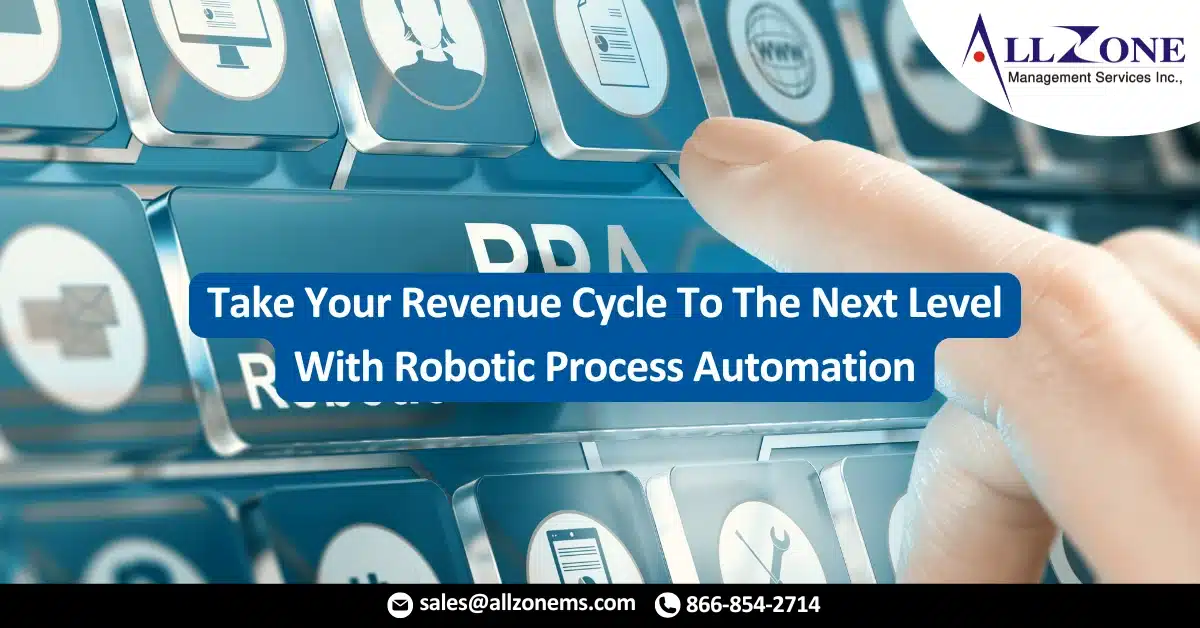To remain fiscally viable, hospitals and health systems must ensure reimbursement is collected properly and in a timely fashion.
Healthcare’s “perfect storm” — the ever-increasing cost of care paired with the complexity of technology and rising expenses — has intensified this pressure, according to David Millen, vice president of information technology and digital transformation at revenue cycle management company R1 RCM.
During an April 16 webinar hosted by Becker’s Hospital Review and sponsored by R1 RCM, Mr. Millen said providers are responding to healthcare’s challenging environment by pursuing automation. This healthcare trend is in keeping with the overarching trend across industries of increased robotic process automation. In September 2017, Deloitte conducted a global survey of more than 400 leaders from various industries. Fifty-three percent of respondents said they’d already implemented robotic process automation. This percentage is expected to increase in the next two years to 72 percent, and eventually to near-universal adoption in the next five years, Mr. Millen said.
Intelligent Automation In The Revenue Cycle
Robotic process automation can be defined as “a set of application technologies that automate workflow, primarily for administrative work,” according to Mr. Millen. Automation is best used for common tasks that can be replicated, including queries, cutting and pasting, clicking buttons, and more.
RPA can be especially useful for revenue cycle management (RCM) — especially when you think about current RCM processes at hospitals. Typically, an RCM platform is put in place from a primary vendor whose main business deliverable is clinical information management and paired with many additional software applications purchased from many other vendors that are patched together in a disjointed way. Almost 80 percent of tasks are still completed manually by over-worked and under-trained staff, who are just trying to get essential work done by switching between screens and applications, chasing down denials, etc. There is a better way to execute upon this work, and it’s through RPA.
RPA can execute specially defined or repetitive processes through the use of intelligent robots. These robots simulate the same actions in the revenue cycle a person would normally complete, such as pre-registration, patient research eligibility, account resolution, collections, billing edits, credit balances, claim status and client accounting.
“RPA not only accelerates workflows, but also gives time back to teams so they have the ability to work on more complex, strategic, and fulfilling assignments,” Mr. Millen said.
RPA far outpaces other traditional process transformation applications in the revenue cycle because of its speed, predictability and relatively low disruption to current processes, Mr. Millen said. Comparatively, traditional IT transformation processes are executed very slowly, have low predictability and require high disruption.
Benefits of RPA In The Revenue Cycle
Revenue cycle processes that are best-suited to be switched over to RPA have a high degree of human interaction, are rules-based (think credentialing), have structured data and require high volume and repetition.
According to Mr. Millen, there are numerous benefits to implementing RPA in the revenue cycle. For one, team capacity can be increased from between 35 to 200 percent, freeing up staff for higher-order problem solving tasks and improving speed, quality and consistency of work. By implementing RPA, hospitals and health systems also have decreased the cost and time associated with resolving errors that lead to claim denials. Additionally, RPA decreases providers’ cycle times, allows for 24/7 operation, improves accuracy and increases employee morale by automating onerous tasks.
As hospitals and health systems begin an RPA journey, leaders should first look at current processes to identify which ones would make the most sense to automate, Mr. Millen said. Providers should prioritize these opportunities, ordering them based on value propositions. The next step is building the bots and deploying them, with the final step being performance monitoring.
Hospitals and health systems should avoid buying automation technology from an automation vendor in another industry, and instead work with a credible partner who can develop a long-term strategy and know where to deploy technologies like RPA and automation from patient access to the back-end to bring greater efficiencies to foundational RCM processes resulting in improved outcomes. A deep review of the revenue cycle process must be completed with a deep understanding of upstream/downstream impacts. Automating a flawed process will increase and create new production errors.
When it comes to deploying an RPA strategy, R1 RCM is a trusted automation partner. R1 RCM manages more than $31 billion in net patient revenue and supports more than 25,000 physicians. To date, R1 RCM serves more than 135 hospital clients nationwide.
RPA Is Here — Does That Mean Humans Are Out?
Since automation is not going away, Mr. Millen stressed the importance of not giving credence to myths associated with automation, such as the widely held belief that “bots will replace humans.”
“RPA is meant to complement humans’ work. It’s meant to give you a digital capability that maybe you didn’t have before automation,” he said.
He offered an analogy of how the role of the carpenter has been improved with better technology.
“Fifty years ago, carpenters were building homes with hand saws. They had to cut the wood with a lot of precision. Then they created electric saws. Do they still need carpenters? Of course they do. Did technology help the carpenters perform better? Yes. It’s about putting tools in the hands of operators.”
This analogy applies to today’s healthcare industry, with RCM partners developing the new cutting-edge technology, or electric saw, in the form of bots to help hospitals and health systems perform better. Working with the right automation partner allows organizations to learn how to develop and deploy technology that will cut through pain points, minimize repetitiveness and enable employees to take on higher value opportunities.
For More Information: https://www.beckershospitalreview.com/finance/take-your-revenue-cycle-to-the-next-level-with-robotic-process-automation.html

